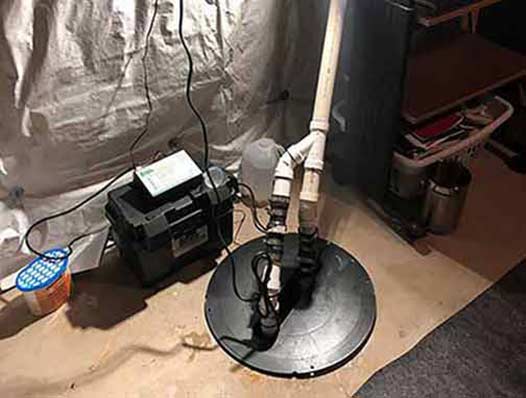
Basement flooding is a big fear of many homeowners, warns Harper Management. Even in an unfinished basement, a flooding incident can cause damage that will cost tens of thousands of dollars to fix. The aftermath of flooding may linger for weeks or months in the form of mold and mold sickness.
This is one of the reasons why a basement sump pump is probably your home’s most critical flood protection system. Without a functional sump pump, you would have to spend nearly every moment of your waking hours worrying about the possibility of a basement flood in your home.
But a sump pump takes over the job of watching over your basement to protect it from flooding. A sump pump can do this because it operates on autopilot. The equipment does not need your active participation to do its job; it will power itself on and off as required.
But this is not to say that your sump pump does not need your attention. To work properly, the sump pump must be kept in good condition at all times. Part of the process of maintaining your sump pump involves understanding how the sump pump works.
How a basement sump pump works
- The sump pump remains inactive inside the empty sump basin but is primed to spring into action at the first sign of flooding.
- However, the sump pump does not activate at the first hint of water flowing into the sump basin. Instead, as the water level inside the pit rises, it also lifts the float switch.
- When the float switch rises to a predetermined level, it activates the sump pump.
- The water inside the pit is pumped out and transported to the designated discharge point within or beyond your property.
- This goes on until the water inside the sump basin is completely removed. Afterward, the float switch deactivates the pump as it sinks back to its previous level.
- However, if there is flooding, the sump pump will not switch off but will continue to operate as long as water keeps flowing into the sump basin.
- This ensures that the water level inside the basement is kept artificially low and water does not enter your living space or damage the basement.
This entire process repeats several times in the year unless something goes wrong with the sump pump.
What can go wrong with your sump pump?
Because it operates itself, sump pump issues can have a huge effect on your home. That’s because it is possible to think the sump pump is still operational when it has failed. This leaves your basement vulnerable to flooding. What are the common sump pump problems?
- The power supply Is cut off because the sump pump is unplugged, there is a power outage, or the circuit breaker has tripped.
- The float switch fails to activate the sump pump because it is jammed and cannot float.
- The sump pump does not switch off after emptying the sump basin because the float switch doesn’t return to its previous position.
- The sump pump activates but cannot pump water because the pump inlet is clogged or the impeller is stuck or damaged.
- The discharge pipe is clogged, or the check valve is damaged, causing pumped water to backflow into the sump pit.
- The sump pump cycles frequently because it is too small for the home’s needs.
- The sump pump vibrates excessively and makes a lot of noise every time it is working.
Any of these problems can prevent your sump pump from working, or the sump pump may work without actually pumping water. How can you prevent these problems?
How to maintain your sump pump
- Test the pump often
To test your sump pump, fill a 5-gallon bucket with water and empty it into the basin. The sump pump should power on. Listen to it as it works to make sure there are no strange noises. Wait to see if it turns off after the pit is empty.
- Inspect the sump pump regularly
Inspect the sump pump system – discharge line, check valve, sump pit, etc. – at least once in two months, especially when approaching storm season.
- Clean the sump pump system
Sump pumps are easily clogged because they handle a lot of dirty water. Remove debris and mud from the sump pit, and clean the sump inlet, float switch, and sump pump.
- Cover the sump basin
Installing a cover on the sump basin will prevent debris from entering the pit. This will reduce the risk that your sump pump will be clogged with debris.
- Add a backup sump pump
A battery-powered sump pump system keeps your home safe from flooding even when your primary sump pump stops working.
Lastly, you need an experienced plumber who can spot issues before they become major problems. A good plumber will also inform you when your sump pump or components of the sump pump system need to be replaced or updated.

